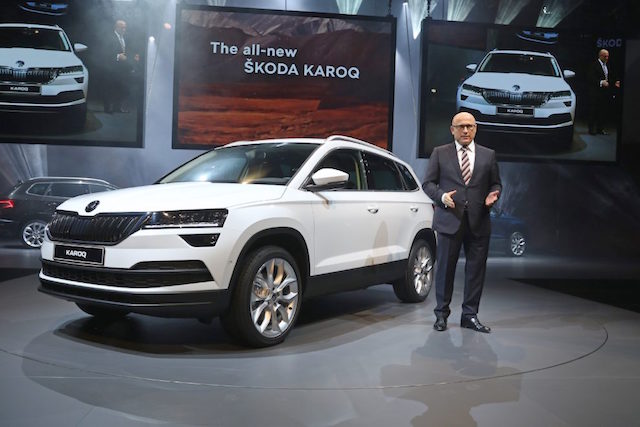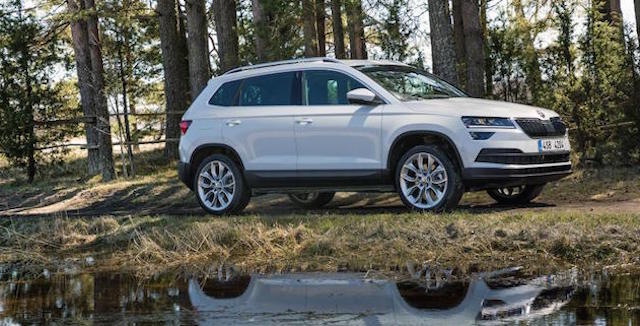
Skoda’s new Kodiaq SUV has clearly influenced the design of the smaller Karoq – and it will clearly shape future vehicles from the Czech carmaker.
Kodiaq went on sale in NZ a week or so ago, priced from $39,990. Karoq – replacement for the Yeti – will be here around April next year. A smaller Karoq, dubbed baby Karoq, is under development. Think of it as a rival for the Nisan Juke, among others.
There is also a Kodiaq coupe in the pipeline, a BMW X6-type design with a swooping roofline. But it is likely to be earmarked for the Chinese market, initially at least.
Skoda exterior design chief Karl Neuhold says the coupe will “echo the styling” of the seven-seat Kodiaq, the ‘big-daddy’ blueprint for Skoda’s SUV future and its plan to double global sales by 2025.
The Karoq range itself is expected to expand with Sportline and Scout versions. There is also a plug-in hybrid in the pipeline. Skoda CEO Bernhard Maier (top) has said there is customer interest in a go-faster vRS, a badge currently limited to the Octavia.
The men tasked with bringing the Kodiaq and Karoq to life were Neuhold and head of design Jozef Kaban, who is shortly to take over a similar role at BMW.
“The old Yeti was polarising,” Neuhold (above) told media outlets in Europe. “The design was very different from everything. The new car (Karoq) is coming from the Kodiaq, but has its own identity as well.”
Karoq is considerably larger than Yeti. At 4382mm, it’s 160mm longer; width of 1841mm is 50mm wider; its 2638mm is 60mm longer too. That’s the front-drive Karoq’s wheelbase. The four-wheel-drive’s slightly shorter at 2630mm.
Front-drive Karoqs will have a choice of driving modes. Like Kodiaq, Dynamic Chassis Control will be available on the top-end model. It offers adjustable electro-hydraulic suspension.
Four-wheel-drive editions can be specified with an off-road mode, which uses the traction control system and an electronic differential lock to improve traction.
The Karoq is being launched in with a line-up of five engines, although the NZ-spec models are likely to have three – one petrol and two diesels, each mated to six-speed gearboxes. A seven-speed DSG is available in the top-end models in some markets.
The petrol unit is expected to be a new 1.5-litre four-cylinder delivering 110kW/250Nm. It comes with cylinder deactivation technology for CO2 emissions of 119 grams per kilometer.
The entry-level diesel is a 1.6-litre motor, delivering 85kW/250Nm and emitting 118gr/km of CO2. Skoda NZ’s second diesel choice will be out of the following, both of 2.0-litre capacity: one delivering 110kW/340Nm, and emissions of 115gr/km; the other 170kW/400Nm and 138gr/km.
Karoq will be the first Skoda to get the VW Group’s digital instrument panel, as seen on the Audi TT and latest VW Golf 7.5. It will bring a whole new level of connectivity to the brand.



